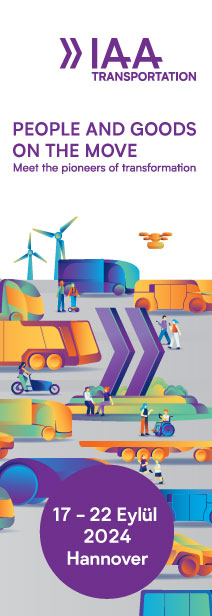These test drives take part between January 23rd and February 1st on Shin-Tomei Expressway southwest of Tokyo and on Kita-Kano Expressway, north of the Japanese capital. The Japanese ministry of economy, trade and industry (METI) and the ministry of land, infrastructure, transport and tourism (MLIT) initiated the platooning test. It is part of the Japanese government’s Future Strategy 2017. This strategy aims to roll out innovations like the Internet of Things, big data and artificial intelligence across all industries. In the commercial vehicle sector, truck platooning will contribute to the reduction of fuel consumption and to lower CO2-emissions. In addition, truck platooning will help with Japan’s dramatic driver shortage issue.
Martin Daum, Member of the Board of Management of Daimler AG, responsible for Trucks and Buses: “Two years ago, we demonstrated with Mercedes-Benz trucks in Europe that platooning can be done and is highly advantageous. Right now, we keep developing the technology with Freightliner on public roads in the US. Japan is a key market for us that is on the lookout and promotes new technologies. We take part in the Japanese government’s initiative to push platooning further ahead in Asia and to remain in the lead in the development of this technology.“
Daimler Trucks leading autonomous, connected and electric driving
For years, Daimler Trucks has been doing pioneer work in autonomous, connected and electric driving with its truck brands Mercedes-Benz, Freightliner and FUSO. Throughout the globe, Daimler Trucks has now connected around 560,000 trucks to the Internet of Things – more than any other manufacturer. For the digital connection of the FUSO Super Great during the platooning test, Daimler Trucks is combining the technological possibilities of connectivity with its experiences in the field of autonomous driving. Wi-Fi-based Vehicle-to-Vehicle communication (V2V) interacts with driver-assistance systems, which are also used in Daimler-brands Mercedes-Benz and Freightliner. Some of those are Cooperative Adaptive Cruise Control (CACC), Lane Departure Assist and Active Brake Assist 4 (ABA 4).
In 2014, Daimler Trucks launched the truck-concept Mercedes-Benz Future Truck 2025 with autonomous driving function. Its designated aim was to develop the autonomous driving technology for series production until 2025. The following year, Daimler introduced “ Highway Pilot“ in Germany. In 2016, Daimler took part in the Dutch government’s initiative European Truck Platooning Challenge with three electronically connected and semi autonomous driving Mercedes-Benz Actros. The Freightliner Inspiration Truck has been driving in a so-called pairing-configuration (two electronically connected trucks) on public roads in Nevada and Oregon, since 2017. The FUSO Super Great is the first model of a Daimler-brand to drive in a platoon with other trucks in the key market Japan.
When it comes to platooning, the trucking industry in Japan in not only talking about technology, but also – like in Europe and the US – about regulatory issues. As a matter of fact: When the legal framework is set, Daimler Trucks customers will be able to operate their vehicles in platooning mode.










